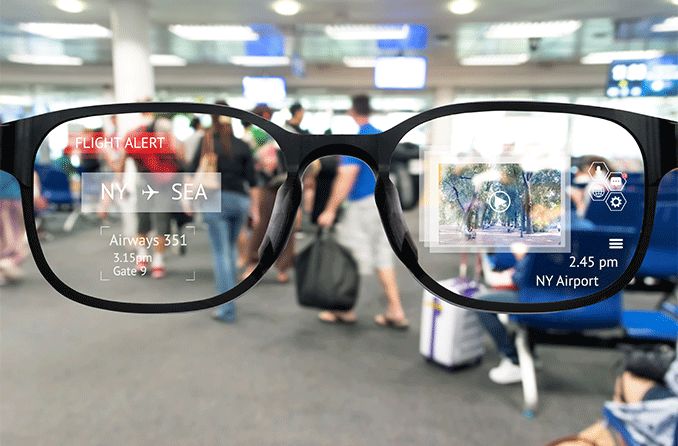For years, the future of personal computing was envisioned through the lens of immersive, all-encompassing headsets. The dream was one of “spatial computing,” where digital and physical worlds would merge into a single, interactive reality. However, a significant and pragmatic shift is now rippling through the tech industry. Major players are recalibrating their focus, moving away from bulky, high-cost augmented and virtual reality headsets toward a more accessible and immediately useful form factor: lightweight, AI-powered smart glasses. This pivot isn’t merely a change in hardware; it represents a fundamental rethinking of the human-computer interface. The new goal is not to create a separate digital destination but to weave “ambient intelligence” seamlessly into the fabric of our daily lives. This article delves into the technological drivers, market dynamics, and profound implications of this strategic evolution, exploring why the next big thing in wearables may look less like a sci-fi helmet and more like the glasses you already wear.
The Market Pivot: From Spatial Computing to Ambient Intelligence
The initial wave of high-end AR/VR headsets, while technologically impressive, has struggled to find a foothold beyond niche enterprise applications and dedicated enthusiasts. This has prompted a strategic re-evaluation, pushing the industry toward a more practical and scalable vision for wearable technology.
The Headset Conundrum: High Cost, Low Adoption
Devices marketed as “spatial computers” have faced several significant barriers to mainstream adoption. The most obvious is the prohibitive cost, often running into thousands of dollars, placing them far outside the budget of the average consumer. Beyond the price, the form factor itself presents challenges. These headsets are often heavy, cumbersome, and can lead to physical discomfort after short periods of use. Furthermore, their socially isolating nature makes them “destination” devices, suitable for specific tasks or entertainment in a controlled environment but impractical for everyday social interaction. This is a critical point in the latest Wearables News, as the market searches for a device that enhances, rather than replaces, real-world engagement. The limited library of “killer apps” for these powerful AR/VR AI Gadgets News platforms has also failed to provide a compelling reason for most people to invest in such a specialized piece of hardware.
The Rise of the AI Companion
In stark contrast to the immersive headset model, a new category is gaining momentum: the AI-powered smart glasses. Products like the Ray-Ban Meta Smart Glasses and Amazon’s Echo Frames prioritize a different set of values: subtlety, convenience, and constant, contextual assistance. These devices are designed to be worn all day, looking and feeling like conventional eyewear. Their primary function is not to overlay a complex digital world but to serve as an ever-present AI assistant. The focus shifts from visual immersion to intelligent interaction. Users can capture photos and videos from a first-person perspective, listen to music or podcasts discreetly, and, most importantly, interact with a powerful AI. This is where the latest AI Assistants News becomes directly integrated into our line of sight. By asking a question, the glasses can provide real-time information, translate a foreign language on the fly, or identify an object in the user’s view using their built-in cameras. This makes them powerful AI Companion Devices News, transforming a simple accessory into a proactive tool for navigating the world.
Engineering the Future: Technical Challenges of AI Smart Glasses
Creating a powerful computing device that is indistinguishable from a standard pair of eyeglasses is a monumental engineering feat. It requires balancing performance, power, and aesthetics in a highly constrained form factor, pushing the boundaries of miniaturization and efficiency.
Miniaturization and Power Efficiency

The core challenge is cramming an entire ecosystem of technology—processors, high-resolution cameras, an array of microphones, speakers, batteries, and display projectors—into the slender arms and frame of a pair of glasses. Every millimeter and milliwatt counts. This is where advancements in AI Edge Devices News are critical. The development of highly efficient, low-power Systems-on-a-Chip (SoCs) is essential for handling on-device processing without generating excessive heat or draining the battery. Battery life remains the Achilles’ heel of all-day wearables. Engineers must innovate with battery chemistry, power management software, and even energy-harvesting technologies to extend usability beyond a few hours of active use. The charging case, now a standard for earbuds, has become a necessary stopgap, but the ultimate goal is a device that can last a full day on a single charge.
The AI Engine: On-Device vs. Cloud Processing
The intelligence of these glasses relies on a sophisticated AI engine, which operates on a hybrid model of on-device and cloud-based processing. For tasks requiring immediate response and privacy, such as wake-word detection or simple commands, on-device processing is paramount. This leverages the device’s local hardware, ensuring low latency without sending personal data to the cloud. However, for more complex queries, such as a multi-modal search that combines an image from the camera with a voice command, the glasses must offload the processing to the cloud. This often involves tethering to a smartphone, which acts as the primary gateway and processing hub. This tight integration highlights the latest trends in AI Phone & Mobile Devices News, where the phone is becoming the central brain for a user’s personal network of connected devices. The future may see more powerful on-device Neural Interfaces News, reducing reliance on the cloud and improving both speed and privacy.
The Display Dilemma: Waveguides and Micro-LEDs
Perhaps the most complex component is the display. The goal is to project a clear, bright image into the user’s eye without obstructing their view of the real world. The leading technology for this is the waveguide, a micro-thin piece of glass or plastic that “guides” light from a tiny projector at the temple to the user’s pupil. Paired with ultra-small, high-brightness projectors like Micro-OLEDs or Micro-LEDs, waveguides can create a transparent “heads-up display” (HUD). The primary trade-offs are field-of-view (how much of your vision the display covers), brightness (for outdoor visibility), and power consumption. Much of the ongoing work in this area falls under AI Research / Prototypes News, as companies race to develop displays that are both visually impressive and energy-efficient enough for an all-day device.
Beyond the Frame: Ecosystem Integration and Real-World Applications
The true potential of AI smart glasses will be unlocked not by the device itself, but by its ability to seamlessly integrate with the vast ecosystem of connected devices and services that surround us. It is poised to become the ultimate interface for the Internet of Things (IoT) and a catalyst for a new generation of context-aware applications.
The Smart Glasses as a Hub for the Internet of Things (IoT)
Imagine a world where you can control your environment simply by looking and speaking. This is the promise of smart glasses as an IoT hub. By integrating with Smart Home AI News platforms, you could look at a smart bulb and say, “Dim this light to 50%,” and the glasses would identify the object and execute the command. This extends to all connected devices. You could check the status of your Robotics Vacuum News, adjust your thermostat, or preheat your oven from Smart Appliances News, all without pulling out your phone. The glasses, equipped with AI-enabled Cameras & Vision News and an array of AI Sensors & IoT News, become the universal remote for your life, offering an intuitive and frictionless way to interact with the growing number of smart devices in our homes and cities. This vision even extends to controlling Drones & AI News with a simple voice command and head gesture.
Real-World Use Cases and Vertical Integration

The practical applications of AI smart glasses are vast and transformative. For the everyday consumer, they can provide hands-free navigation while cycling, overlaying directions directly onto the street. In the kitchen, they can display recipes step-by-step, advancing to the next instruction with a voice command, a key development in AI Kitchen Gadgets News. During a workout, they can display real-time biometric data, turning them into advanced AI Fitness Devices News. For creators, they offer a unique first-person perspective for content, a new frontier for AI Tools for Creators News.
The impact on accessibility is particularly profound. For individuals with visual impairments, the glasses can provide real-time object recognition and text-to-speech, a life-changing application for AI for Accessibility Devices News. In professional fields, the applications are equally compelling. A surgeon could overlay a patient’s vitals or an MRI scan during an operation, a key area of Health & BioAI Gadgets News. A technician could receive remote assistance, with an expert seeing what they see and annotating their view with instructions. This level of integration promises to revolutionize industries from logistics and manufacturing to education and sports, where AI in Sports Gadgets News could provide athletes with real-time performance analytics.
Charting the Course: Navigating the Path to Mainstream Adoption
Despite the promising technology and compelling use cases, several significant hurdles must be overcome before AI smart glasses become a ubiquitous consumer product. Success will depend on mastering not just the technology, but also the social and ethical challenges that come with it.
The Style and Social Acceptance Factor
History has shown that for a wearable to succeed, it must be fashionable, or at the very least, socially inconspicuous. No one wants to wear a device that marks them as a “tech enthusiast” in a negative way. This is where AI in Fashion / Wearable Tech News plays a crucial role. Strategic partnerships between tech companies and established eyewear brands are essential for creating designs that are stylish, comfortable, and available in a variety of options. The device must first and foremost be a great pair of glasses; the technology should feel like an invisible, magical upgrade.

Privacy and Data Security: The Elephant in the Room
An always-on camera and microphone worn on someone’s face raises immediate and legitimate privacy concerns, both for the wearer and for those around them. The industry must address this head-on to build public trust. This involves a multi-layered approach. First, clear and unambiguous physical indicators, such as a prominent LED light, must signal when the device is recording. Second, robust on-device processing for sensitive data can minimize what is sent to the cloud. Finally, transparent data policies and user controls are non-negotiable. The field of AI Security Gadgets News will be instrumental in developing encryption and security protocols to protect this new stream of highly personal data collected by AI Monitoring Devices News.
The “Killer App” and Developer Ecosystem
Ultimately, sustained adoption will hinge on the existence of a “killer app”—a function so useful that it makes the device indispensable. Is it a hyper-intelligent, proactive AI assistant? Is it seamless, real-time language translation that breaks down communication barriers? Or is it an augmented reality feature we haven’t even imagined yet? To discover this, companies must foster a vibrant developer ecosystem, providing open APIs and tools that allow third parties to build innovative applications. This will spur the creativity needed to move smart glasses from a novelty gadget to an essential tool for modern life.
Conclusion: A Clearer Vision for the Future
The tech industry’s pivot from complex spatial computers to intelligent, lightweight smart glasses marks a crucial maturation of the wearables market. This strategic shift acknowledges that for a technology to be truly personal, it must integrate into our lives with minimal friction. By prioritizing ambient intelligence, all-day utility, and a socially acceptable form factor, companies are laying the groundwork for a more practical and attainable future. The path ahead is fraught with technical and ethical challenges, but the vision is clear. The future of wearable computing is not about replacing reality with a digital world, but about subtly enhancing it with a layer of contextual, AI-driven intelligence. The race is now on to build the first truly indispensable AI companion that lives not in our pocket, but right before our eyes.










